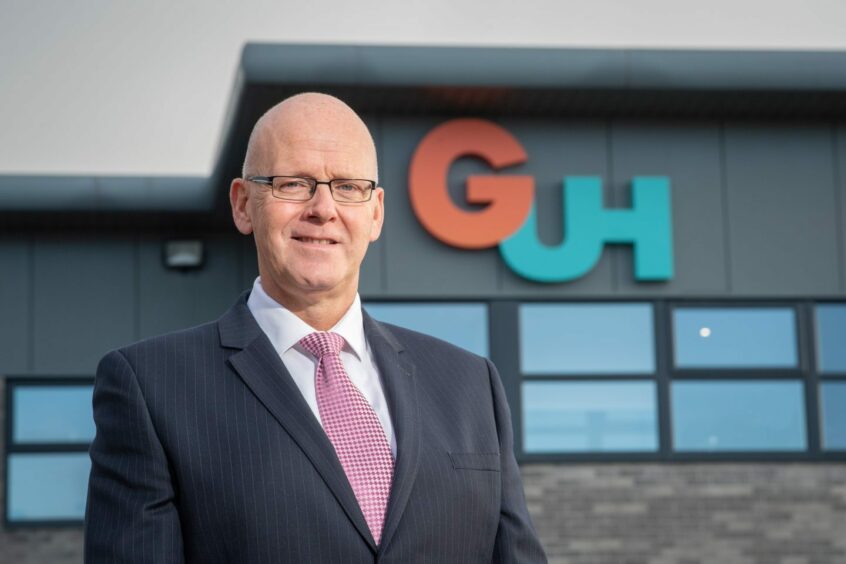
For many in the underwater industry, the last 12 months can be best summed up as confusing. Shifts in energy policy coupled with the turmoil in the global offshore wind markets have led to uncertainty in the supply chain which can only thrive on certainty.
This volatility and unpredictability have come at a time when the volume of parallel UK and international offshore energy projects is unprecedented.
In less than seven years, the UK aims to reduce carbon emissions by 68%, achieve 50GW of offshore wind, of which 5GW is floating, store up to 30m tonnes of CO2, maintain energy security and double aquaculture revenue. This is in addition to maintaining data and communications connections to the rest of the world – primarily via subsea cables – and ensuring security across borders which are increasingly seen as extending from landmasses and into the maritime environment. Most other countries also hold similar aspirations and while they may differ in size, scale and priority, all are deeply rooted in using the seabed to achieve them.
The UK has made world-leading progress on the development of offshore wind, often doing so while aggressively cutting the cost of generation. Consider the recently operational Seagreen wind farm, contracted to a strike price of £41.51MW/h against the recently approved Empire Wind in the US which was subject to a petitioned increase from $118MW/h to $159.64MW/h, an almost three-fold increase on the UK counterpart!
The failure of the AR5 round to attract any bids at those prices was a wake-up call in terms of UK competitiveness. The subsequent, sensible adjustment of strike prices for the next round was a welcome statement of understanding from the Government that our net zero ambitions are not isolated from inflation, rising costs and other market pressures which would otherwise threaten to block the substantial pipeline of offshore wind opportunity.
Setting the prices for AR6 at a more attractive level gives developers more room for manoeuvre in terms of margins, which should allow for investment in the development of technology and, in turn, pave the way for fixed and floating wind at more realistic prices.
Equally these improved strike prices should also impact on wave and tidal. Wind may be the most mature renewable energy market, but wave and tidal which are more constant and reliable, albeit not at the same scale, will provide additional resilience in terms of feeding the grid.
This is all part of the energy mix needed for the transition. But the underwater supply chain cannot transition without projects. Visibility and certainty, coupled with the right policies and investment are needed to encourage the shift.
Looking ahead to next year, if we are to accelerate the energy transition, we must see encouragement for sustainability in oil and gas projects, particularly those around decarbonisation.
The INTOG licences, which are largely about decarbonising existing oil and gas production, present a massive opportunity for the underwater supply chain, especially in offshore floating wind where the UK, with its experience and expertise in subsea dynamic cables, moorings and anchor systems, can become a genuine world-leader.
It is the INTOG projects and their supply chain companies which will be the trail-blazers, paving the way for Scotwind and global projects, with the introduction of world firsts, both in terms of technology and its application.
Proving these offshore floating wind projects will then enable us to export that capability and knowledge around the world and in deeper waters.
We’re fortunate to have shallow waters around the UK, where we have honed our subsea expertise, but the even bigger, longer-term upside for the UK’s underwater supply chain is the move into deeper waters around the world.
High demand, however, does not guarantee a successful supply chain, particularly where it requires elements of transition, investment, upskilling, reskilling and understanding of what that demand looks like across a global seascape.
How we position the UK’s underwater industry for the future and how long that future may take before it makes dividends will be what we grapple with in 2024.
The underwater supply chain must nurture our oil and gas sector because that’s still an important part of the energy mix, along with decommissioning here and abroad. While, at the same time, be ready to meet the floating offshore wind demand.
Global Underwater Hub’s 2023 business survey highlighted the three key ingredients for the UK’s underwater supply chain: capacity, capability and confidence .
There is no doubt that we have the capability but what we need, more than anything in 2024, is the confidence.
Project certainty, dependable timelines, stable fiscal and operating environments and financial reward will remain the key drivers to unlocking the necessary investment in capacity to grasp the opportunities whether that be people, technology assets or facilities.
Global Underwater Hub (GUH) is the leading trade and industry development body for the UK’s underwater sectors. Led and governed by industry, Global Underwater Hub represents, promotes and supports all sectors of the £8billion underwater industry, which includes oil and gas, offshore wind, hydrogen and CCUS, wave and tidal energy, aquaculture, defence, subsea telecoms and cables, and marine science.
Recommended for you
